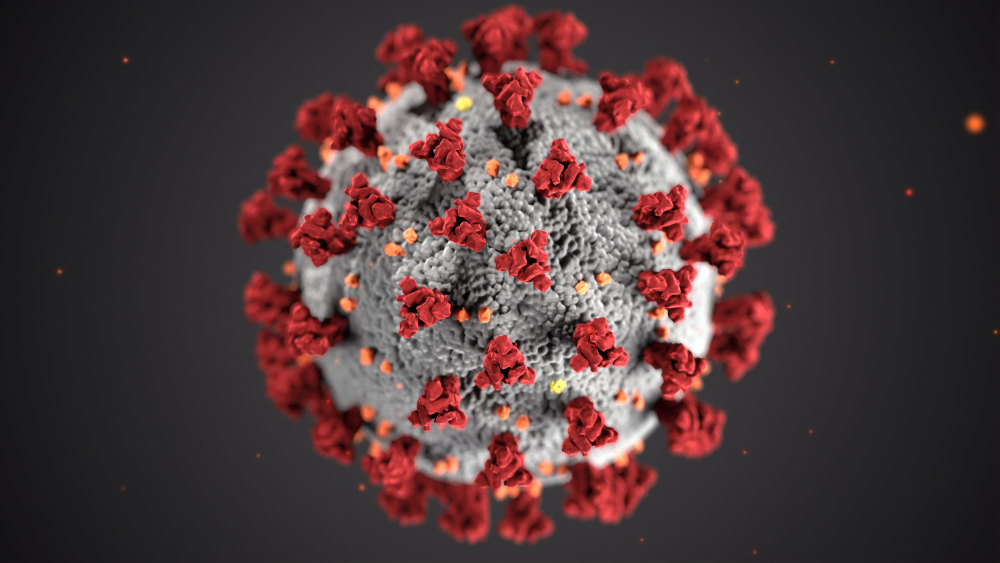The novel Coronavirus keeps surprising us every day as scientists work hard to find out more about this virus that has so far infected more than 200,000 people all over the world. While we cannot expect to get a vaccine anytime soon, we need to stay up-to-date with all the latest research and follow all the guidelines about prevention.
One of the biggest enigmas was how this virus spread so fast onto so many people across the globe. But with every day, we are one step closer to answers to those and many other burning questions.
The Latest US Study Brings New Facts
Scientists already knew that the virus could survive on clothes and surfaces, and therefore spread more quickly, but no one knew for how long. Now we have new information that will help us protect ourselves and apply further steps to protect ourselves.
A study that gathered scientists from the Centers for Disease Control and Prevention, the National Institutes of Health, UCLA, and Princeton University tried to examine how long can COVID-19 survive in the air and on surfaces.

They tested the virus on surfaces such as cardboard, copper, stainless steel, plastic, and then compared their results to SARS. SARS is another type of Coronavirus that was epidemic in 2002, but it killed significantly fewer people, around 800.
So, what did they find out? According to the study, the virus can be found in aerosols for no longer than three hours. On copper, it can survive up to four hours, and up to 24 hours on cardboard. The virus can survive the longest on stainless steel and plastic, even up to three days. But, if there is any good in this, it was confirmed that the amount of virus on these surfaces decreases as time goes by.
When it comes to aerosols, the term refers to small particles in the air such as dust, fog, gas, and other liquid particles that can be found in the air. The results show that people can “catch” the virus from the air or by touching a contaminated surface.
So far, we know that the virus spreads through contact or small drops of liquid through sneezing or coughing. The study also showed that the stability of COVID-19 is much like SARS, but the difference is that COVID-19 can be transmitted even if the person is not showing any symptoms, which was not the case with SARS.
The novel Coronavirus is certainly more contagious than SARS. SARS infected around 8,000 people, while the number of people infected by COVID-19 currently surpasses 200,000, but predictions are that the final number will be significantly higher.
How to Protect Yourself and Your Household
There are no vaccines or medications that help in a situation when the virus is so new, and when we do not know a lot about it, that is the main difference between the seasonal flu and new Coronavirus. Flu has been around for decades, and although a lot of people die every year from it, doctors still manage to treat it successfully with vaccines and save many lives.
Since the symptoms are very similar, until COVID-19 ELISA kits for testing confirm, no one can tell if it is just the flu or Coronavirus. So how to protect yourself and prevent the virus from spreading?
Taking Care of Yourself
So far, self-isolation and social distancing seem to be the best steps we can take to protect our health. Of course, that is not always possible, but keep in mind that certain cities in Asia and Europe are under lockdown, and no one is allowed to go out, so that scenario can happen to us as well.
- Wash your hands thoroughly and often with soap and water for at least 20 seconds.
- Use hand sanitizers with no less than 60% of alcohol.
- Avoid touching your mouth, nose, eyes, and face in general.
- Cover your mouth when sneezing or coughing.
- Avoid crowded places and contact with other people, wear face masks and gloves.
How to Take Care of Your Household
Since we now know that the virus can survive on surfaces, we have to pay special attention to the frequently used surfaces in our homes. You should clean and disinfect everything from doorknobs, tables, phones, keys, floors, rugs, and drapes. Use disinfecting wipes and sprays to ease the process, while fabrics should be washed at the highest possible temperature according to the instructions.
The Bottom Line
No one knows how long all this will last; the reality is that we are still waiting for the peak in the US and Europe. Therefore it is important to stay up-to-date with all the latest information. The numbers of infected people are growing rapidly, but you should not panic if you are taking care of yourself and everyone around you. Do not trust everything you find online, rely on reliable sources of information such as the CDC website, and stay at home as much as possible.